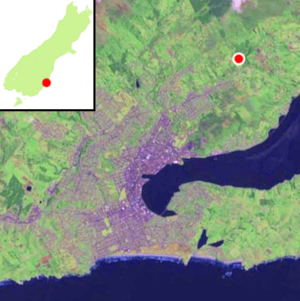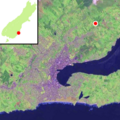Bethune's Gully facts for kids
Bethune's Gully is a special natural area in northern Dunedin, located on the South Island of New Zealand. It's found near the suburb of Normanby, at the northern end of North East Valley. This gully is home to a lot of very old-growth forest and many Douglas fir trees. It's also an important natural area right below the cloud forest on the higher parts of Mount Cargill. The gully was created by the upper parts of Lindsay Creek. This creek flows into the Water of Leith, which runs through North East Valley.
Contents
Exploring Bethune's Gully
Bethune's Gully is surrounded by a large reserve and recreation area. This area covers about 86 hectares (212 acres). It's a great starting point for walking and trail-biking tracks. These tracks lead up the slopes of Mount Cargill, which is about 2.5 kilometers (1.6 miles) to the north.
Walking to Mount Cargill Summit
One popular track is a 2-hour round trip walk. It takes you all the way to the top of Mount Cargill. The summit is about 580 meters (1,900 feet) higher than the gully. This walking track was first opened to the public in 1981. It's a fantastic way to see amazing views of the area.
Mountain Biking Adventures
In 1996, Bethune's Gully hosted the New Zealand national mountain-biking championships. After the championships, the biking tracks were made even longer. They were opened for everyone to use in 2003. If you love biking, nearby Forrester Park on Norwood Street has the city's main BMX circuit.
History of Bethune's Gully
The reserve is named after David Bethune. He took over the land in 1878. David Bethune set up a sawmill there to cut timber and a brick kiln to make bricks.
From Private Land to Public Park
After David Bethune sold the property, it wasn't used for a while. Then, after World War I, a person named J. B. Thompson redeveloped the area. He leased it to the Dunedin City Council. After Thompson passed away in 1955, Bethune's Gully officially became property of the city. This made it a public park for everyone to enjoy.
How to Get There
You can reach Bethune's Gully by taking Cluny Street. This is a short paved road off Norwood Street in Normanby. Beyond Cluny Street, Norwood Street goes through a narrow road section before opening up into the countryside.
Images for kids



